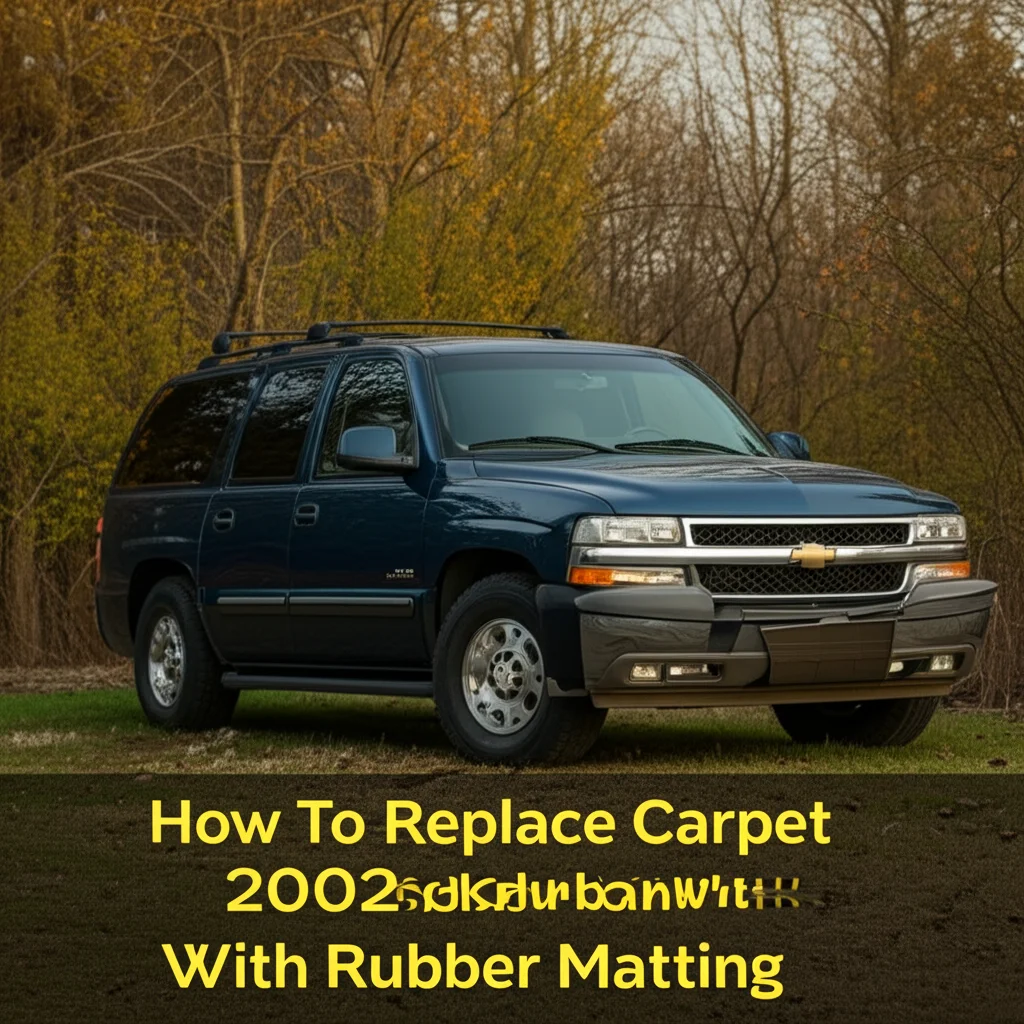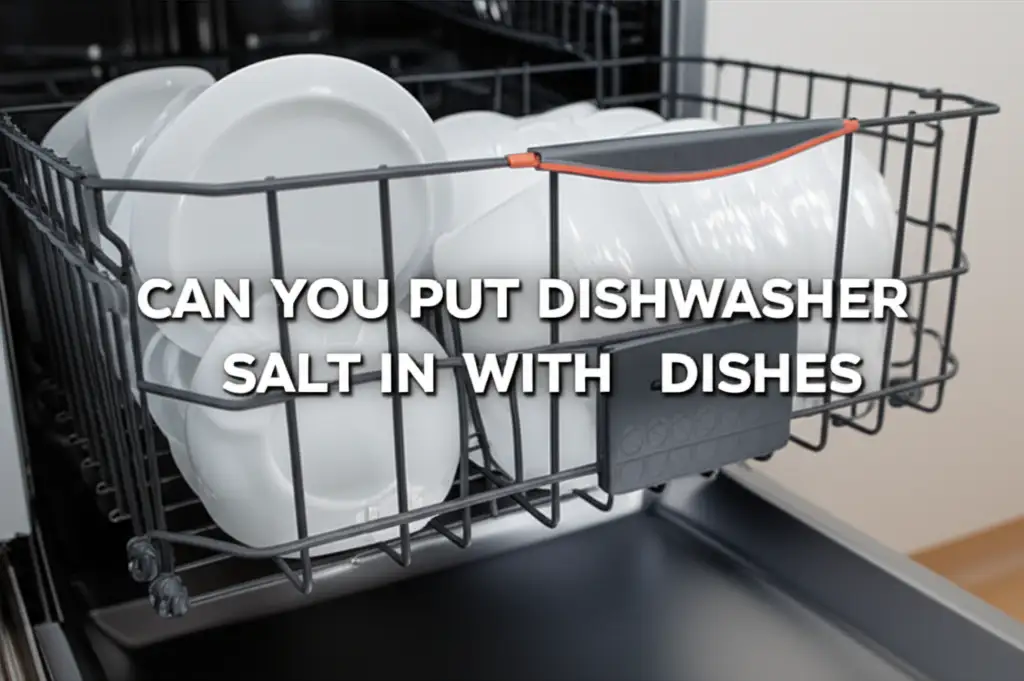· Todd Martin · Vehicle Upgrades · 17 min read
How To Replace Carpet In 2002 Suburban With Rubber Matting

Upgrade Your 2002 Suburban: Replacing Carpet with Rubber Matting
Your 2002 Chevrolet Suburban has likely seen many adventures. Over two decades, the factory carpet takes a beating. It collects dirt, absorbs spills, and shows wear from countless journeys. If you are tired of stained, matted carpet, consider a practical solution. Replacing carpet in your 2002 Suburban with durable rubber matting offers a fresh start. This upgrade provides a much cleaner, more resilient, and easier-to-maintain interior.
This guide helps you through the entire process. We cover why rubber is an excellent choice for your vehicle. We list the tools and materials you need. You will learn how to prepare your Suburban, remove the old carpet, and install the new rubber matting. We also provide tips for maintaining your new floor. This project is a rewarding DIY task. It gives your trusty Suburban a functional and long-lasting interior refresh.
Takeaway
Replacing your 2002 Suburban’s carpet with rubber matting transforms its interior. This upgrade offers:
- Superior durability and resistance to wear.
- Effortless cleaning for spills and dirt.
- Enhanced protection against moisture and stains.
- A refreshed, practical, and long-lasting vehicle floor.
To replace carpet in a 2002 Suburban with rubber matting, first remove all seats and trim. Next, pull out the old carpet. Then, clean the exposed floor pan thoroughly. Finally, cut and fit new rubber matting sections, securing them in place before reinstalling the interior components for a durable, easy-to-clean floor.
Why Replace Carpet with Rubber in Your 2002 Suburban?
Opting for rubber matting over traditional carpet in your 2002 Suburban offers many practical advantages. Carpet can hold odors, trap dirt, and stains easily. Rubber provides a robust, low-maintenance alternative. It transforms your vehicle’s interior. This change gives you peace of mind during daily use or adventurous trips.
Durability and Longevity
Factory carpet in a 2002 Suburban eventually wears thin. It frays at the edges and develops unsightly stains. Rubber matting stands up to heavy use. It resists tears, punctures, and abrasions. This material handles muddy boots, spilled drinks, and pet hair with ease. It maintains its integrity over many years, unlike fabric.
Rubber mats endure extreme temperatures. They do not crack in the cold or become overly soft in the heat. This makes them ideal for any climate. The tough surface ensures your investment lasts. You do not worry about frequent replacements. Rubber provides a long-term flooring solution for your vehicle.
Easy Cleaning and Maintenance
One main reason people replace carpet is cleaning difficulty. Carpet absorbs liquids, making spills hard to remove completely. It also traps dust and allergens. Rubber matting offers effortless cleaning. A quick wipe-down or hose-off is often all it needs.
Mud, dirt, and pet messes simply sit on the surface. You can easily vacuum them up or wipe them away. For tougher grime, a damp cloth with mild soap works wonders. This saves you time and effort. It keeps your Suburban interior smelling fresh and looking clean. Learn more about how to clean a rubber floor effectively.
Enhanced Protection
Beyond durability, rubber matting protects your Suburban’s floor pan. It creates a barrier against moisture, preventing rust and mildew. Spills cannot soak through to the metal floor. This protection is vital for vehicle longevity. It also helps preserve the resale value.
The non-porous nature of rubber stops odors from lingering. This is a huge benefit for families, pet owners, or outdoor enthusiasts. Rubber matting keeps your vehicle’s base dry and free from damage. It is a smart choice for anyone seeking a resilient and practical floor.
Essential Tools and Materials for Your Suburban Floor Upgrade
Before you begin replacing your 2002 Suburban’s carpet with rubber matting, gather all necessary tools and materials. Having everything ready simplifies the process. It also ensures the project runs smoothly. Taking time for preparation saves time during the actual work.
Tools You’ll Need
You will need a basic set of hand tools. A socket wrench set is crucial for removing seats and console bolts. A flat-head screwdriver helps with prying up trim pieces. A utility knife or heavy-duty scissors are vital for cutting the new rubber material.
You might need a drill with various bits, especially if any bolts are stripped. A shop vacuum will be indispensable for cleaning the floor. Don’t forget safety gear like work gloves and eye protection. These tools help you remove the old carpet and install the new matting efficiently.
Here is a list of essential tools:
- Socket Wrench Set (various sizes, especially 15mm, 18mm for seats)
- Screwdriver Set (Phillips and Flat-head)
- Utility Knife or Heavy-Duty Scissors
- Measuring Tape
- Marker or Chalk
- Shop Vacuum
- Pry Tools (for trim removal, plastic is best to avoid scratches)
- Work Gloves
- Safety Glasses
Choosing the Right Rubber Matting
Selecting the correct rubber matting is key to a successful upgrade. You need automotive-grade rubber. This material is designed to withstand vehicle conditions. It resists oil, chemicals, and extreme temperatures. Look for matting that is thick enough for durability but flexible enough to mold to contours.
Consider a matting with a textured surface for better grip. This helps prevent items from sliding around. It also adds safety. Many options come in rolls, allowing you to cut custom pieces. You can find these at automotive supply stores or online. Ensure you buy enough material to cover your entire floor plan.
Consider these factors when choosing:
- Material Type: Automotive-grade rubber (e.g., SBR, EPDM, Nitrile) for durability and chemical resistance.
- Thickness: Aim for 1/8 to 1/4 inch (3-6mm) for a good balance of durability and flexibility.
- Surface Texture: A ribbed or textured surface provides better grip and helps hide dirt.
- Roll Size: Measure your Suburban’s interior thoroughly to estimate the required length and width. It is always better to buy extra.
- Odor: Some rubber products have a strong odor initially; look for low-VOC options if this is a concern.
Preparing Your 2002 Suburban for Carpet Removal
Proper preparation is essential before you begin removing the old carpet. This stage involves clearing the vehicle’s interior. It also includes an initial cleaning. A clean and empty workspace makes the entire removal and installation process much smoother. It helps you avoid missing any fasteners or damaging interior parts.
Interior Disassembly
Start by removing everything from your Suburban’s interior. Take out floor mats, trash, and any personal items. Next, you need to disconnect the battery. This prevents accidental activation of airbags or electrical components. It is a critical safety step. This also ensures you can safely work around wiring harnesses.
The goal is to get down to the bare floor. Take photos as you go. This helps you remember where everything connects. Label any wires or bolts you disconnect. Keep all removed fasteners organized in separate containers.
Cleaning the Bare Floor
Once the interior is stripped, you will see the bare floor pan. This area likely has dirt, dust, and possibly old carpet adhesive. Use your shop vacuum to remove all loose debris. Pay close attention to corners and crevices. A thorough vacuuming saves time later.
For any stubborn dirt or residue, use a stiff brush and an automotive-safe cleaner. Ensure the floor is completely dry before proceeding. Any moisture can lead to mold or rust under your new matting. A clean surface ensures better adhesion for any future glue or tape. This step is critical for a long-lasting installation. You can find tips on how to clean car carpet for initial cleaning of the existing carpet if needed.
The Step-by-Step Process of Removing Old Carpet
Removing the old carpet from your 2002 Suburban is the most labor-intensive part of this project. It requires patience and attention to detail. This process involves disassembling various interior components. You need to handle them carefully to avoid damage. Work methodically to ensure you find all attachment points.
Seat Removal
The front seats are usually held by four large bolts to the floor. The rear seats might have quick-release levers or more bolts. Locate all bolts and remove them using your socket wrench. Be aware of any electrical connectors under the seats for power adjustments or airbags. Disconnect these carefully.
Once unbolted, lift the seats out of the vehicle. They are heavy, so ask for help if needed. Store them in a safe place where they will not get damaged. Remember to keep all bolts and connectors organized. Label them clearly so you know where each one goes during reassembly.
Trim and Console Disassembly
Next, tackle the center console and various trim pieces. The center console usually has hidden screws or clips. Look inside storage compartments and under cup holders for fasteners. The kick panels along the doors and side panels often snap into place. Use a pry tool to gently release these.
Work slowly to avoid breaking plastic clips. Some trim pieces might have wiring for lights or speakers. Disconnect these carefully. The carpet often tucks under these trim pieces, so their removal is necessary to free the carpet. Continue taking photos as you remove each component. This visual guide will be very helpful later.
Carpet Unfastening and Extraction
Once seats, console, and trim are out, you can access the carpet. The carpet is typically molded to the floor pan. It often has jute padding underneath. It may be held in place by clips, bolts, or sometimes light adhesive in specific areas. Start from an edge, usually near the door sills.
Begin pulling up the carpet. You might need your pry tool to help release it from under any remaining dash trim. Carefully cut around any areas that are hard to free, like seatbelt anchors. Take your time to extract the entire carpet in as few pieces as possible. This makes it easier to use as a template later.
For carpet in larger vehicles like the Suburban, you might find it comes in multiple sections. Remove each section completely. After the main carpet is out, check for any remaining padding or adhesive. Scrape off any stubborn residue to ensure a clean, smooth floor. This prepares the surface for your new rubber matting.
Installing Your New Rubber Matting in the Suburban
With the old carpet gone and the floor clean, you are ready to install your new rubber matting. This stage requires precision cutting and careful placement. A good fit ensures a professional look and long-lasting performance. Take your time with measurements and cuts for the best results.
Template Creation and Cutting
The old carpet serves as your best template. Lay the removed carpet sections flat on your new rubber matting material. Use a marker or chalk to trace the exact shape. Be precise around contours, bolt holes, and console cutouts. Double-check all measurements before cutting.
Use a sharp utility knife or heavy-duty scissors for cutting. Make long, steady cuts. Go slowly around curves and intricate shapes. It is always better to cut slightly larger and trim down later. Test-fit each piece as you cut it. Make minor adjustments as needed to ensure a snug fit against the floor pan and around obstacles. This step is similar to how you would replace flooring in other large vehicles, such as how to replace fishing boat carpet.
Securing the Matting
Once all pieces are cut and test-fitted, you need to secure them. For most automotive rubber matting, a good friction fit is often enough. The weight of the matting and the reinstalled components hold it in place. However, for added security, you can use a spray adhesive or double-sided carpet tape.
Apply adhesive sparingly, especially around edges and high-traffic areas. This prevents shifting. Ensure the matting lays flat without any buckles or wrinkles. Press down firmly across the entire surface. If your matting is thick, you might need to heat it slightly with a heat gun (on a low setting) to help it conform to extreme curves.
Reassembly of Interior Components
After the rubber matting is securely in place, begin reinstalling your Suburban’s interior. Start with the larger components like the center console. Use your photos and labels to guide you. Line up all bolt holes and wiring connections. Tighten bolts securely but do not overtighten.
Next, reinstall the trim pieces and kick panels. They should snap back into place or align with their screw holes. Finally, bring the seats back into the vehicle. Carefully line them up with the floor mounting points. Reconnect any electrical harnesses before bolting the seats down. Ensure all seatbelts function correctly. Connecting the battery should be the very last step. Test all electrical components to confirm everything works as expected.
Post-Installation Care and Maintenance of Your New Floor
Installing new rubber matting in your 2002 Suburban is a significant upgrade. Maintaining it properly ensures its longevity and continues to protect your vehicle. Rubber floors are inherently easy to care for, but a regular routine helps them look their best. Simple steps keep your Suburban’s interior clean and fresh.
Regular Cleaning Routine
The best part about rubber matting is how simple it is to clean. For daily tidiness, a quick vacuum or sweep removes loose dirt. For spills or mud, a damp cloth is usually enough. Wipe down the affected area immediately. This prevents anything from drying on the surface.
For a deeper clean, mix warm water with a mild, non-abrasive soap. Use a soft brush or sponge to scrub the matting. Rinse thoroughly with clean water. You can even use a hose for large sections, if removable, or if doing a full interior wash. Allow the matting to air dry completely before heavy use. Learn more about how to clean a rubber floor to keep it spotless.
Addressing Spills and Stains
Rubber is highly resistant to most stains. However, certain substances can leave marks or residues if left too long. Oil, grease, or sticky spills should be addressed quickly. Use a degreaser or automotive cleaner designed for rubber surfaces. Apply it to a cloth first, then wipe the stain.
Avoid harsh chemicals or solvents like bleach or petroleum-based cleaners. These can degrade the rubber over time. For tough, dried-on stains, a gentle scrubbing brush might be necessary. Always rinse the area thoroughly after cleaning. This prevents cleaner residue from building up. If you have large rubber-backed rugs elsewhere, similar cleaning principles apply, like cleaning large rubber-backed rugs.
Long-Term Durability Tips
To maximize the life of your new rubber matting, consider a few additional tips. Avoid dragging heavy or sharp objects across the floor unnecessarily. While durable, excessive friction can cause wear over time. If you carry extremely heavy or abrasive cargo regularly, consider placing an extra protective layer.
Periodically inspect the edges and seams of your matting. Ensure they remain flat and secure. If you used adhesive, check for any areas that might be lifting. Reapply adhesive if needed. With proper care, your rubber matting will provide years of reliable service and protection for your 2002 Suburban. This small effort ensures your investment lasts.
Common Challenges and Troubleshooting
Even with careful planning, unexpected issues can arise when replacing your Suburban’s carpet. Being prepared for common challenges helps you resolve them efficiently. Knowing how to troubleshoot keeps your project on track. This section covers some frequent hurdles and how to overcome them.
Dealing with Adhesives and Residue
Old carpet sometimes leaves stubborn adhesive residue on the floor pan. This needs removal for a smooth surface. Use a plastic scraper to avoid scratching the metal. For very sticky spots, an automotive adhesive remover can help. Apply it according to the product’s instructions.
Always test any cleaner on a small, hidden area first. This ensures it does not damage the underlying paint or rust-proofing. Once the adhesive is soft, scrape it away. Wipe the area clean with a damp cloth afterward. A clean, smooth surface is essential for proper matting installation.
Matting Fit Issues
Despite careful templating, you might encounter fit issues. If the matting is slightly too large, trim it incrementally. Cut small amounts at a time, then test the fit. It is better to make several small cuts than one large, irreversible one. A sharp utility knife is key for clean edges.
If the matting is slightly too small in an area, you have a few options. For small gaps, you can try to stretch the rubber gently into place. For larger discrepancies, you might need to use a second piece of matting to patch the area. This is often necessary for very complex curves or tight corners. Plan your cuts to hide any seams under trim pieces.
Electrical Considerations
Your 2002 Suburban has various electrical wires running under the carpet. These connect seats, sensors, and other components. When removing the old carpet, be careful not to cut or pull these wires. Note their original routing. When installing the new matting, ensure wires are not pinched or exposed.
Route wires safely underneath the matting or along designated channels. Use zip ties to keep them neat and secure. If any wires were damaged, repair them properly before reassembly. Test all electrical components like seat warmers or power seat adjustments after the installation. This confirms everything is functioning safely. Always reconnect the battery last.
FAQ Section
How long does it take to replace carpet with rubber matting in a 2002 Suburban?
The project duration varies based on your experience. For a first-timer, it can take anywhere from 8 to 16 hours. This includes disassembling the interior, removing old carpet, cleaning, cutting and fitting new matting, and reassembling. Experienced DIYers might complete it in a single day. Break the task into manageable stages if time is limited.
Is rubber matting better than vinyl for a Suburban?
Both rubber and vinyl offer advantages over carpet. Rubber is generally thicker and provides more sound deadening. It also offers better grip and is often more resistant to tears and punctures. Vinyl is typically thinner, lighter, and very easy to clean. For heavy-duty use and superior durability, rubber is often the preferred choice for a Suburban.
Can I do this project myself, or do I need a professional?
Replacing the carpet with rubber matting is a common DIY project. It requires patience and basic mechanical skills. You do not need specialized tools beyond common hand tools. However, if you are uncomfortable with interior disassembly or cutting materials, a professional auto upholstery shop can do the work. Doing it yourself saves a lot on labor costs.
What kind of rubber matting is best for vehicles?
Automotive-grade rubber matting is ideal. This material is designed to withstand the harsh conditions inside a vehicle. Look for types like SBR (Styrene Butadiene Rubber) or EPDM (Ethylene Propylene Diene Monomer). These offer good durability, resistance to temperature changes, and chemical resistance. A thickness of 1/8 to 1/4 inch provides a good balance of durability and flexibility.
Will rubber matting affect sound insulation in my Suburban?
The original carpet in your 2002 Suburban includes a jute or foam backing for sound and heat insulation. If your new rubber matting is thinner or lacks a similar backing, you might notice a slight increase in road noise or heat transfer. You can counter this by adding a dedicated sound deadening material or insulation layer under the rubber matting during installation.
How much does it cost to replace carpet with rubber matting?
The cost mostly depends on the type and amount of rubber matting you buy. Automotive-grade rubber rolls can range from $100 to $400, depending on quality and size. Tools are often ones you already own or can borrow. This DIY project is significantly cheaper than professional installation, which could cost $800 to $1,500 or more for labor and materials.
Conclusion
Replacing the carpet in your 2002 Suburban with durable rubber matting is a smart and rewarding upgrade. You transform your vehicle’s interior from a dirt-collecting fabric to a resilient, easy-to-clean surface. This project enhances your Suburban’s functionality. It also adds significant protection against wear, spills, and moisture. The benefits of improved durability and simplified maintenance are clear.
We covered every step needed to achieve this transformation. From gathering tools and choosing the right rubber, to the meticulous removal of old carpet, and the precise installation of your new floor. We also offered essential tips for post-installation care. You now have the knowledge to tackle this project confidently. Give your loyal 2002 Suburban the practical, long-lasting interior it deserves. Take the first step today and enjoy a cleaner, more robust vehicle.





